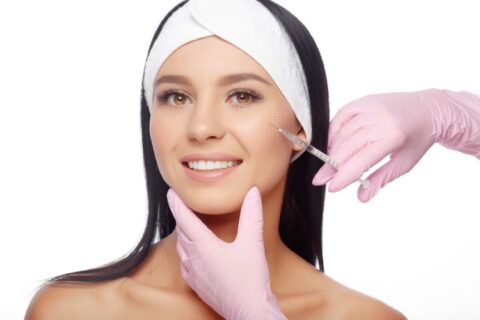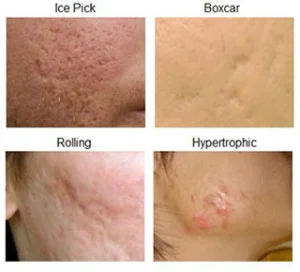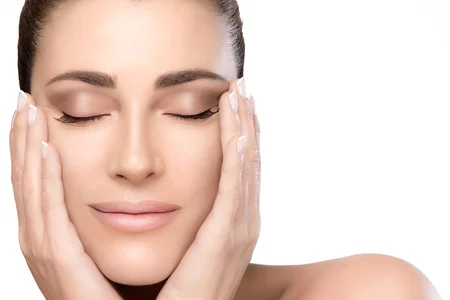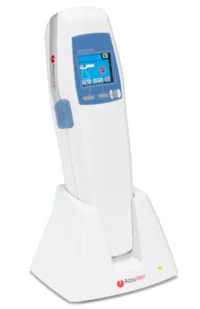Feeling like your cheeks are a little thin? Maybe you wish your cheeks would be more angular, or cast more of a shadow, or just have a bit more volume to them. No matter what you do, you might just not have the right bone structure, or age might leading to volume loss in your cheeks. That’s why you need injectable cheek fillers.
Injectable cheek fillers are growing in popularity, and it’s no surprise why: more and more patients are seeing the value in having their cheeks shaped and volumized to perfectly complement the rest of their face.
In this article, we discuss everything you need to know about cheek fillers and the cheek filler procedure.
What Are Cheek Fillers?
Cheek fillers are essentially dermal fillers that are specifically injected into the cheeks. Dermal fillers are gel-like, soft injectables that are injected beneath the surface of the skin. They are used for a variety of common cosmetic applications, such as smoothing lip lines, volumizing lips and nasolabial folds, lifting cheekbones, reducing circles under the eyes, volumizing the hands, and of course, filling in the cheeks.
Dermal filler products come in both synthetic and naturally-occurring formulas. The most popular formulas use hyaluronic acid or HA as their base substance. Hyaluronic acid is a natural substance that is produced by the body, helping the skin with rejuvenation, augmentation, hydration, and general skin health.
How Do Cheek Fillers Work?
When injected into the skin, the dermal filler process is determined by the formula of the product. In most formulas, particularly those that are made with hyaluronic acid, the gel sits underneath the skin, spreading in the area around the injection site.
After a period of six months or longer, the filler is gradually and safely absorbed into the body, after which another treatment is required to maintain results and beauty.
With the gel injected into the cheeks, the hyaluronic acid or similar compound used in the formula acts to increase the volume and hydration of the cheeks, giving the cheeks a natural and healthy augmentation and fullness.
A major benefit of using injectables made with hyaluronic acid is that hyaluronic acid fillers can be dissolved by certain safe solutions. This means that if a patient is unhappy with their cheek filler, the provider can follow it up with a solution to force the filler to dissolve, rather than waiting for the filler to be naturally absorbed by the body.
Other safe and popular options are made out of polymethyl methacrylate, poly-L-lactic acid, calcium hydroxyapatite, and autologous fat, which is fat that is sourced from the patient’s own body and injected into the treated area.
While each substance brings its own advantages and disadvantages to the table, hyaluronic acid fillers are the most popular choices due to their risk-free and immediate results.
Why Are Cheek Fillers Important?
While popular applications include injections around the lips and the eyes, most people are less aware of the potency of treatments around the cheek areas. So what exactly do cheek injectables accomplish?
Cheek injectables have a singular goal: defining the patient’s cheekbones. Many plastic surgeons and dermatologists agree that defined cheekbones are the foundation of a prominent and attractive facial bone structure.
When an individual has prominent cheekbones, their face automatically has a more elevated and lifted look, while the central shadow underneath the cheekbone creates a slimness and youthfulness to the upper and mid-face.
This treatment is also surprisingly customizable. While other treatments can be slightly more limited in how they are used, cheek injectables offer individuals many different choices in application. For example, people with round faces can customize the treatment to give them an angular face; people with thinner faces can focus on plumping their cheeks.
With the cheek treatment, here is more art to it than just adding volume to the treated area. The goal of the doctor or provider should be to complement the face with the cheek filler, to achieve a right and left facial symmetry, creating harmony out of the patient’s natural facial beauty.
Read more: Can You Combine Lip Fillers With Other Facial Treatments?
What is the Best Filler for the Cheeks?

How Do You Choose the Best Doctor?
Some doctors like to refer to cheek fillers as a “contouring treatment in a syringe.” However, it is important that you use the right compound, as well as the right technique. As we said above, strong cheekbones are the foundation of an attractive facial bone structure, but the cheekbones are a delicate area which can be easily overtreated.
If the patient and doctor use a cheek filler that is too harsh or overly effective, you run the risk of achieving a too-angular look, making the face look weird instead of attractive.
The best cheek fillers to choose are those with formulas that contain a hyaluronic acid base, as well as fillers that have a higher viscosity. High viscosity options are more difficult to spread as they have greater firmness. When treating the cheeks, you want fillers that will stay in their intended injection site, to create the cheekbone prominence that you are looking for.
Most doctors recommend Juvederm Voluma for cheek fillers, as Juvederm Voluma is made with hyaluronic acid and is known for its high viscosity. Individuals who are treated with Juvederm Voluma see their cheeks lift up without becoming too angular, which could possibly resemble a plastic facial implant.
Learn more: Juvederm Voluma: Easy Solution for Sunken Cheeks
The Ideal Candidate for Cheek Fillers
As these are a noninvasive and nonsurgical treatment, most people can be safely and successfully treated with injectables around the face, including the cheeks. The ideal candidates for cheek fillers are those who:
- Don’t smoke
- Are physically healthy
- Completely understand the filler process, and the potential results and expectations afterwards
- Are aware of proper after-care methods after the treatment
- Have faces that can be complemented by cheek fillers (consult your chosen provider or doctor about whether or not a filler treatment is appropriate for you)
Price: How Much Does It Cost for Cheek Fillers?
The exact price of your cheek filler treatment will depend on a number of factors, including the expertise of your provider or doctor, the location of your treatment, and the amount of filler required for your cheeks.
On average, you can expect a range of $1000 to $4000 for a complete filler treatment.
Non-Filler Treatments for Defined Cheeks
Dermal fillers are by far the easiest and least invasive way to increase the prominence of your cheekbones or to add volume to your cheeks. Cheeks and cheekbones are a difficult area to treat with other methods, and the only other treatment to volumize deflated cheeks is a facial implant.
Facial implants provide permanent beauty results, but they also require long and tedious surgery, which is why many individuals these days opt for cheek fillers instead.
The Cheek Filler Experience: Everything You Need To Know

Before the Procedure
Choosing a Trusted Provider
Before any treatment, it is important that you choose a doctor or provider that you can trust. Due to the high cost of this treatment, there is a growing black-market dermal filler presence, for DIY usage as well as practitioners who provide the treatment for much more affordable costs, but use questionable products.
Anything that is injected in the skin should be FDA-approved for absolutely safety, as there can be dangerous complications that arise when unsafe products are used during treatments by untrained practitioners. In some cases, off-brand gels are made of nonsterile substances (commonly hair gel or plastic compounds).
Hair gel based fillers or plastic compounds can often lead to skin cell death, dangerous infections, wildly allergic reactions, and in some cases, embolism, which can cause blindness.
If you are tempted to purchase an off-brand derma filler or have your treatment done by an unlicensed and more affordable practitioner, note that the FDA has released an official warning, advising consumers to avoid Internet options as they might be contaminated and harmful.
Consultation
Once you have chosen a trusted provider or clinic, a consultation will be set up between you and your doctor prior to the treatment. During this consultation, you and your doctor will discuss:
- Your goals and expectations with the filler treatment
- Any existing allergies, medical conditions, and ongoing medical treatments
- Any medications or supplements that you might be on
- Any drug use, alcohol, or smoking
- The expected results, as well as how they will last
- What the treatment will hope to accomplish, and how the injectable will be used to actively shape and contour your face
During the Procedure
The procedure itself is quite simple. The patient will come in on the scheduled day of the treatment, and the procedure begins with the patient’s face being numbed, to avoid any pain from the injections. The numbing process should take no longer than five minutes.
After the face has been numbed, the cheeks will then be drawn on, so the doctor can position the exact injection sites for proper filler placement. The injectables are then injected into the cheeks and surrounding area; this process should take no longer than five to ten minutes.
You should not expect to see results immediately after the procedure.
After the Procedure
Possible Side Effects
After the procedure, it is typical for a patient to experience minor swelling around the injection sites. To reduce the swelling, you can apply ice to the swollen areas, however this should not be necessary as the swelling will naturally go away after just a few days. After the swelling, any previous volume loss should start to improve.
It is important that you have your treatment performed by an experience and trusted professional, as serious side effects only generally occur when the treatment has been incorrectly performed. As stated above, some serious possible side effects when treated by a non-professional include:
- Embolism
- Skin cell death
- Allergic reactions
How Long Do Cheek Fillers Last For?
The lifespan of the filler dermal in your cheek depends on a number of factors, most importantly on the natural metabolic rate your body breaks down and absorbs the hyaluronic acid gel, which can slightly vary from person to person.
However, typically a patient can expect a dermal filling injection to last and continuously improve for as little as 6 months, to an average of 10 to 12 months, with some individuals even still seeing results 18 months after their procedure.
While this might disappoint some readers, note that there is nothing stopping you from getting a treatment again once your results begin to fade. Many patients choose to book a treatment every nine to ten months to maintain their ideal beauty structure and volume results in their cheeks.
Set Your Cheek Filler Appointment with Ethos Spa Today
It is crucial that you have your cheek fillers done by a trusted professional, and at Ethos Aesthetics + Wellness, we are home to one of the most trusted dermal filler teams in the New Jersey area. Search no further for the ideal cheek filler provider close to you!
We have performed countless cheek filler procedures on patients young and old, and can help you craft the ideal facial structure with your cheekbone and face shape. We do more than just volumize your cheeks – we understand the art of contouring the face to make it the best version of itself it can be. We treat all parts of the face to increase a patient’s beauty – lips, nasolabial folds, eyes, and more.
Call or message us today, and begin your journey to your ideal treatment with doctors you can trust. Let us help you with your search for maximum beauty. Your perfect close up is just days away.





